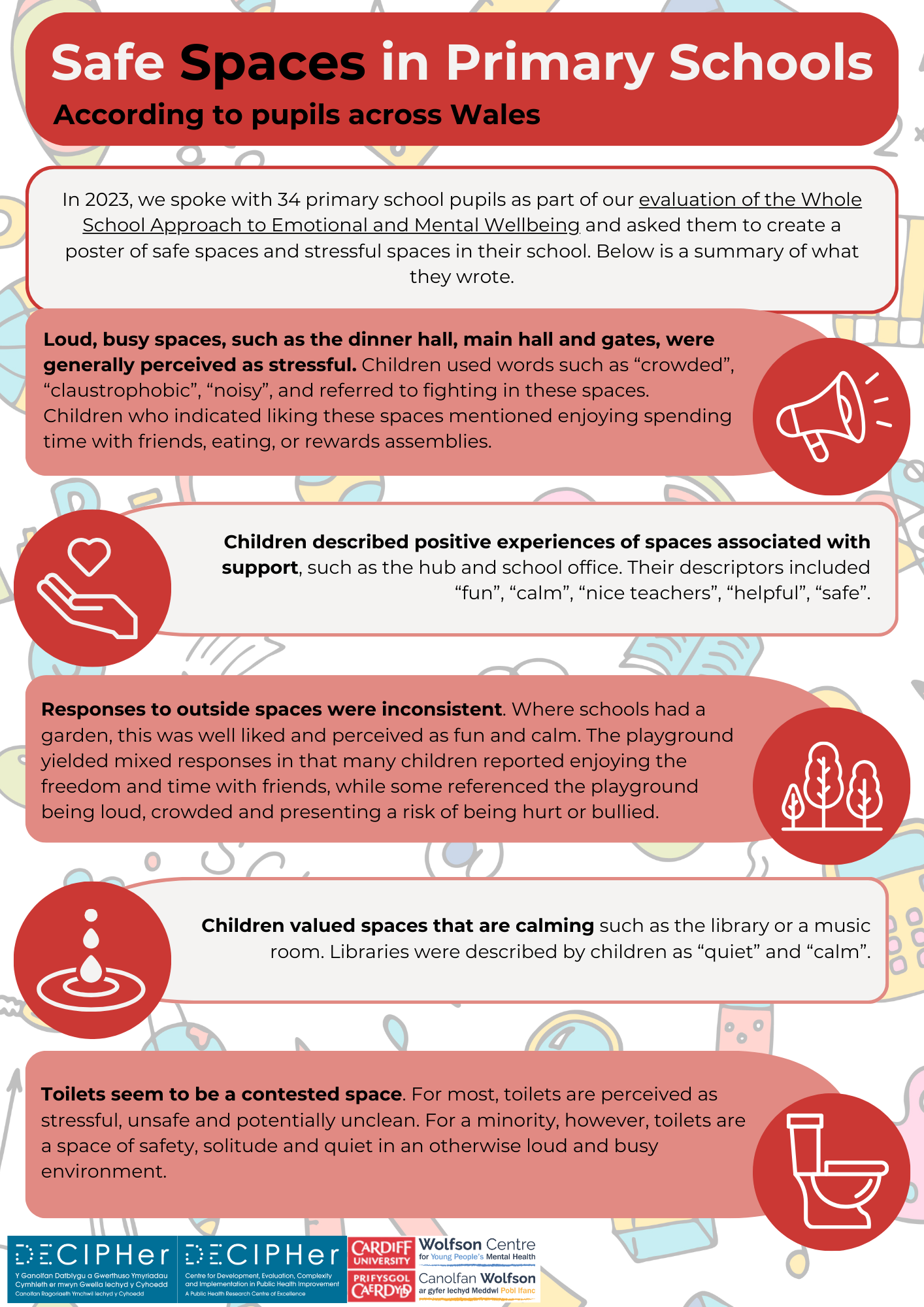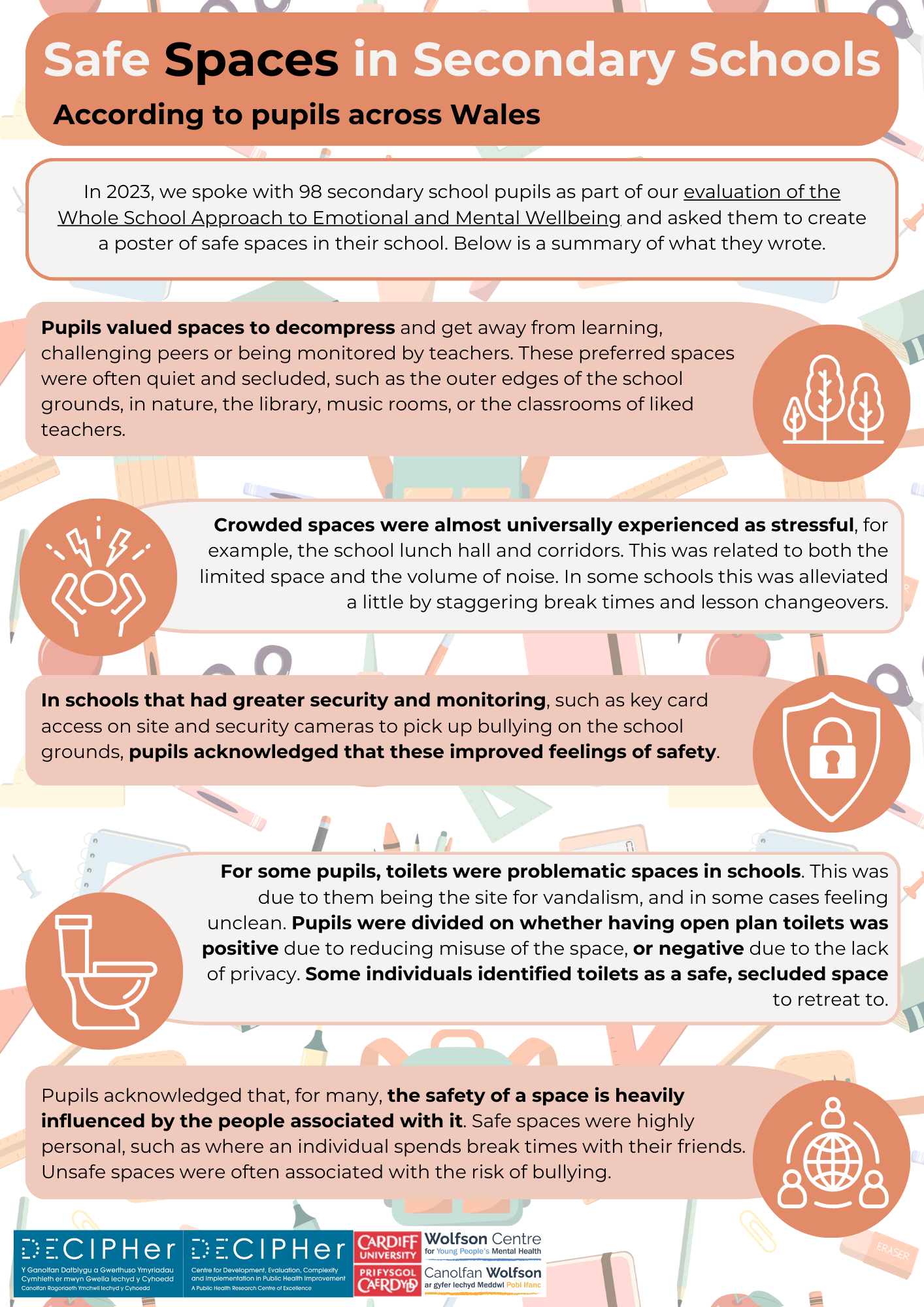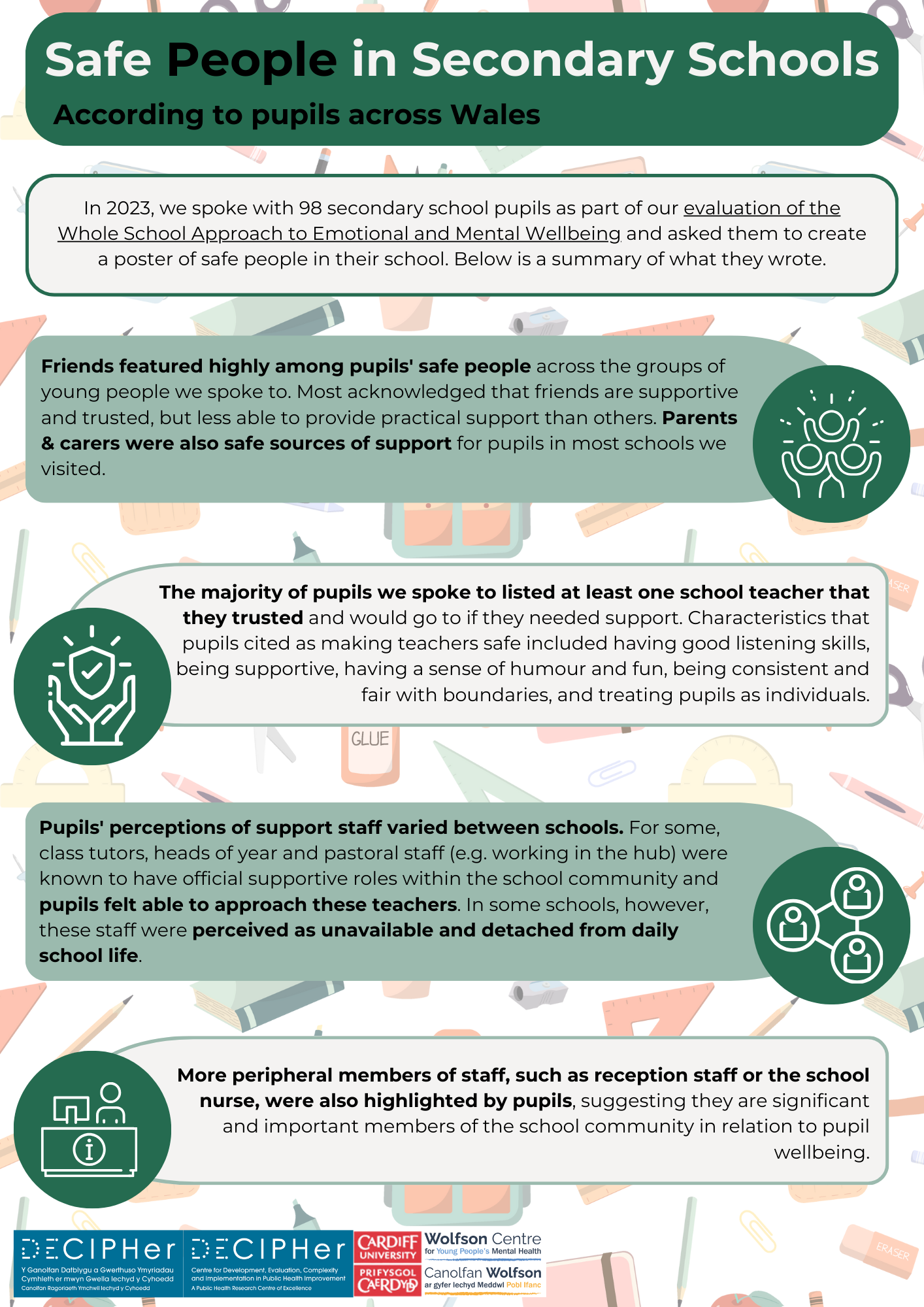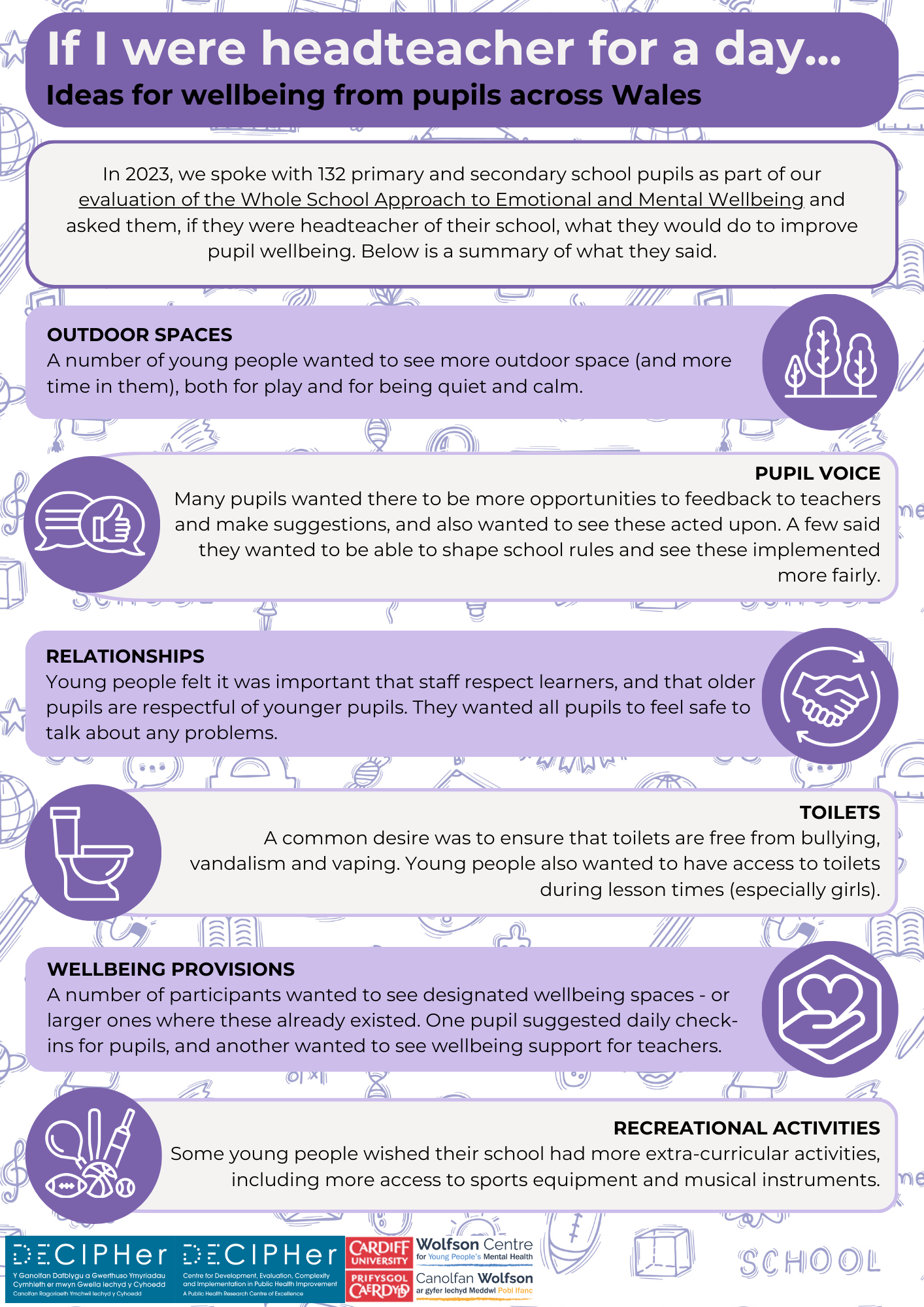
In 2023, DECIPHer researchers spoke with pupils and asked them to create posters around the topic of feeling ‘safe’ in their schools.
In 2021, Welsh Government issued the Framework embedding a whole-school approach to emotional and mental well-being as statutory guidance for schools. The evaluation of this Framework is being carried out by DECIPHer researchers working in the Wolfson Centre for Young People’s Mental Health. The posters, which can be viewed below, are the first in an ongoing series of summary findings collected as part of this evaluation.
Evaluating what works
Increasing numbers of young people across Wales are experiencing emotional distress. Nearly a quarter of secondary school learners in Wales reported having very high levels of mental health symptoms in the years following COVID-19, according to findings from the School Health Research Network (SHRN).
To reduce the pressure on mental health services and to improve the wellbeing of children and young people, schools are increasingly being considered as a site for delivering interventions which promote good emotional wellbeing and prevent the occurrence or escalation of mental health difficulties. The Welsh Government Framework highlights the role for everyone in the school community to consider their own and others’ sense of belonging, efficacy, and voice.
The DECIPHer evaluation seeks to understand not only the Framework’s impact on mental wellbeing, but also the nuances of which school systems and practices work well, in what context, and for whom.
If I were Headteacher…
Part of the evaluation involves interviews with children, young people, teaching staff and relevant professionals working within education, as well as analysis of SHRN survey data collected nationally within schools between 2002 and 2025. For this project, researchers spoke with primary and secondary school pupils and asked them to create a posters of:
- Safe people in school
- Safe spaces in school
- What they would do to improve the school if they were Headteacher
There were some heartening results, with primary school pupils overwhelmingly positive about the people in their school community. The majority of secondary pupils listed at least one school teacher that they trusted and would go to if they needed support.
However, both the majority of both primary and secondary pupils found crowded areas, such as the school lunch hall, stressful. The majority of pupils also considered school toilets problematic, with vaping and vandalism being factors for secondary pupils, and cleanliness for primary pupils.

Research Assistant Zoe Haslam, who conducted the sessions with the pupils, says:
‘It was illuminating to discuss these issues with the learners and really gain a sense of what is important to children and young people across Wales in relation to mental and emotional wellbeing at school.
These summaries highlight the significant role of both people and place in impacting learner wellbeing, and we hope they are a useful tool for schools to continue conversations about supporting learners.
As this research project is currently ongoing, we expect to be able to produce more of these summaries over the coming year to communicate further findings about both teacher and learner experiences of wellbeing in schools across Wales.’
The posters can be read below:
Further reading
Changes and challenges: How are teachers experiencing wellbeing in schools?
Welsh Government Framework on Embedding a Whole School Approach to Emotional and Mental Wellbeing
Blog: Taking a whole-school approach to mental health in Wales





